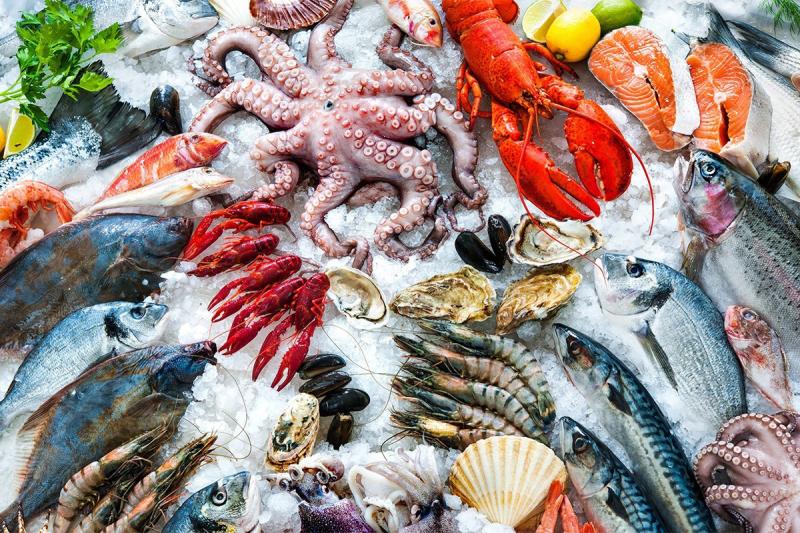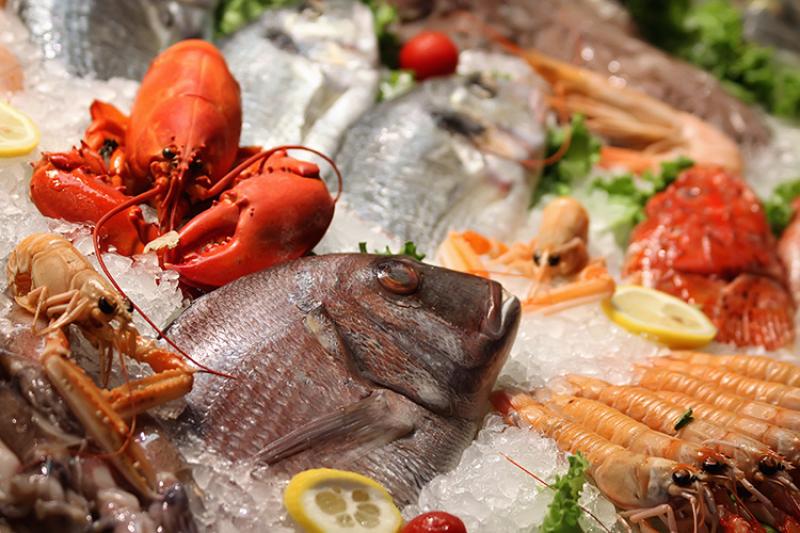If you're a seafood fan like us, you'll be happy to hear that October is National Seafood Month. We will be highlighting sustainable (and delicious) U.S. seafood with new features, videos, and more. Follow along online using the tag #SeafoodMonth. Please start by digging into the seafood features below!
Learn more about sustainable seafood from FishWatch
Seafood Features
FishWatch Helps Consumers Make Smart, Sustainable Seafood Choices
Chris Brown, a commercial fisherman in New England, gives a shout-out to FishWatch.gov—a website that provides information on popular seafood harvested or farmed in the United States to help consumers make smart, sustainable seafood choices. Watch the video below.
New Study Finds That When It Comes to Sustainability, Some Americans are Willing to Pay
The average American consumes about 15 pounds of seafood each year. How do we choose which seafood to buy? Do the abundant seafood labels — U.S.-caught, dolphin safe, MSC-certified, red, yellow, green, farm-raised, wild-caught, etc. — affect our choices? Does information about sustainability make a difference in our grocery store purchases?
Learn more about a new study measuring willingness to pay for environmental attributes in seafood

Warm-blooded fish produces seven distinct types of meat providing new opportunities for seafood chefs.

Commercial fisherman Chris Brown has spent nearly his whole life fishing the waters of New England. See what he has to say about the current state of U.S. fisheries and why American seafood is among the most sustainable natural resources in the world.
Check out the Q&A with Chris Brown here

When different species of fish cohabitate, it can be difficult to target or avoid any particular one; so if any species becomes overfished, it takes the cooperation and commitment of everyone to rebuild. Canary rockfish--one of more than 60 species of rockfish included in the West Coast groundfish fishery--fell into this category when it was declared overfished in 2000.
Learn more about the work to rebuild canary rockfish

Did you know that seafood farming, if done responsibly as it is in the United States, is one of the most environmentally sustainable ways to produce protein?
Learn more about aquaculture and the growing need for farmed seafood
Fish farming--or aquaculture--is a winning situation. It's a win for the economy, a win for the consumer, and a win for the planet. Seafood farmers along the nation's coasts are growing fish to help feed a growing population in an environmentally responsible way. And America's heartland is a key player.
Learn how America's heartland is a key player in aquaculture

Did you know that seafood is trending online? Whether you're slurping oysters at a raw bar or frying up flounder, sustainable U.S. seafood makes a statement across the country--serving up photo-ready dishes and healthy protein for every plate.
Dive into #SeafoodMonth and learn more about U.S. wild-caught and farmed seafood

Watch our new video to learn more about FishWatch and the seafood you love to eat.

National Seafood Month is a perfect time to highlight NOAA's larger "Blue Economy" initiative as an important guiding force for our seafood future. As a NOAA-wide initiative, the Blue Economy effort touches on many areas of the agency, and three of those areas are especially important for fisheries: continuing to maximize commercial and recreational fishing opportunities, giving greater attention and pursuing involvement in the arena of international seafood marketing and trade, and actively promoting and expanding marine aquaculture.
Read the latest leadership message from Assistant Administrator for NOAA Fisheries Chris Oliver

Canary rockfish are found between Punta Colnett, Baja California, and the Western Gulf of Alaska. Within this range, canary rockfish are most common off the coast of central Oregon. U.S. wild-caught canary rockfish is a smart seafood choice because it is sustainably managed and responsibly harvested under U.S. regulations.
Learn more about canary rockfish on FishWatch
As commercial fishermen sold their catch at the busy United Fishing Agency auction house in Honolulu, Hawaii, fish buyer Garrett Kitazaki noticed something curious about the opah changing hands: some had much bigger eyes, and their spots and color looked different.
Learn how a fish buyer noticed differences that revealed several new species of opah

Waters off the Northeastern United States are among the fastest warming and most studied in the world's ocean. Both abrupt and subtle changes caused by warming are evident in fishery stocks now.
Armed with decades of data and a strong appreciation of what climate change could mean for fisheries, Northeast Fisheries Science Center researchers are working with colleagues throughout the region to help navigate this rapidly evolving future.
Learn more about 10 new projects focused on climate and New England groundfish











